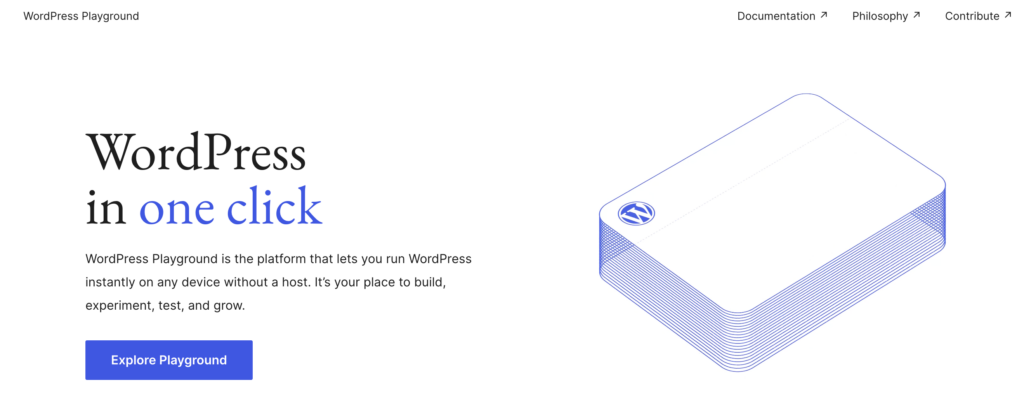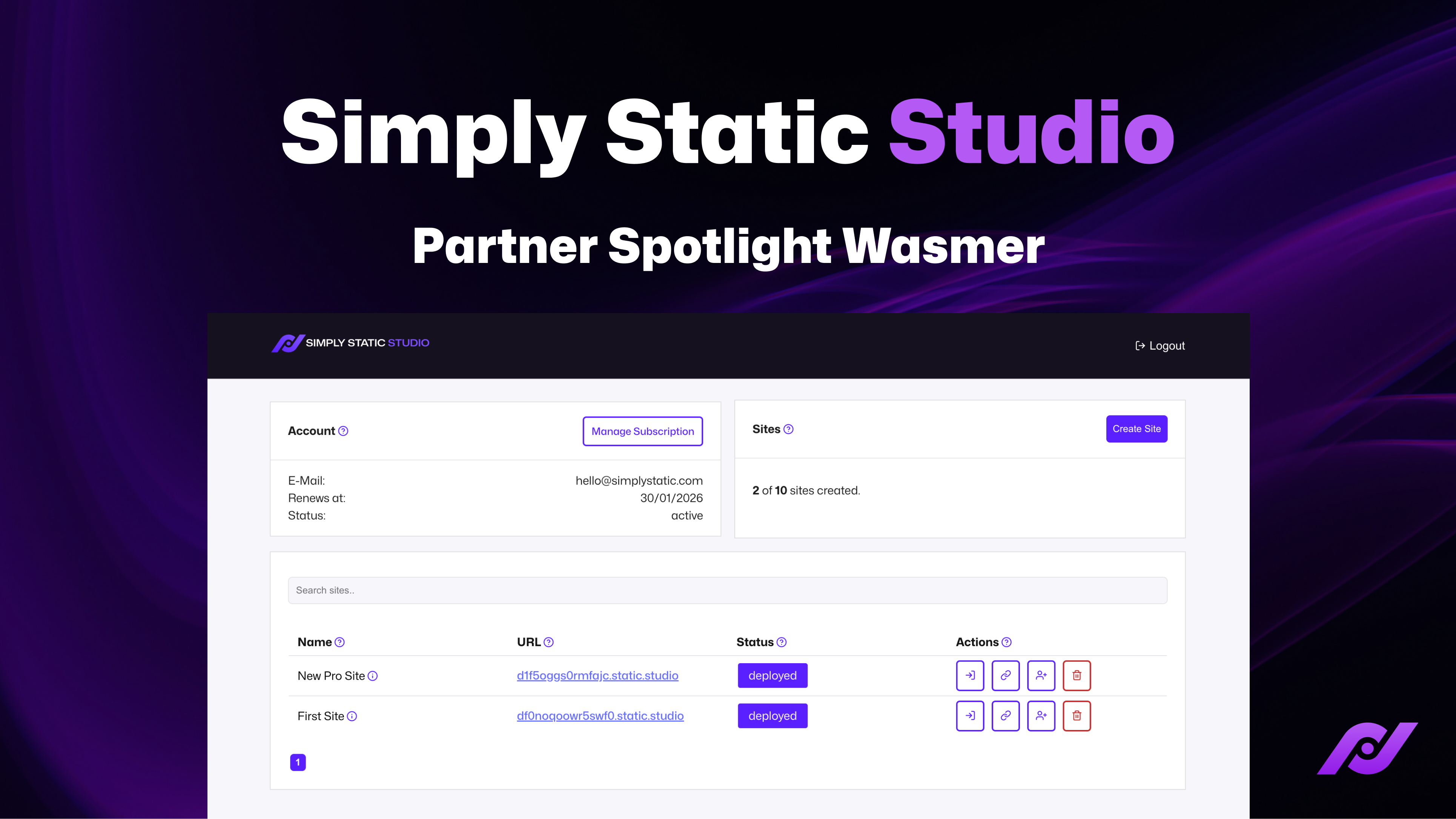Simply Static Studio is an ambitious project that aims to be an all-in-one solution for Static WordPress.
This is only possible with trusted partnerships.
Over the last couple of months, we’ve spent much time finding the best partners for Studio. We’ve made personal connections, attended conferences, and made countless calls to evaluate the perfect fit for our idea.
Today, I want to briefly discuss Wasmer, our infrastructure partner for managing WordPress installations via WebAssembly on a large scale.
What is Wasmer?

Wasmer provides a new container technology powered by WebAssembly. It’s similar to Docker in many ways, but with some fundamental differences in how these containers work and scale.
What is WebAssembly?
You probably already know about WordPress Playground, and Wasmer uses the exact same technology for its platform: WebAssembly.
WebAssembly (or short WASM) is a binary instruction format for virtual machines. It’s ultra-portable and often used to bring software that isn’t web-based to the web.
A good example is Figma.
While written in C++, it’s brought to the web using WebAssembly and a tool called EmScripten (a JavaScript compiler for WASM).
If you are interested in WebAssembly, the official website is a great starting point.
I will also write a technological deep dive in another article. I’ve spent quite some time learning WebAssembly and using all its facets on the Wasmer platform, but that’s something for another day!
Run fast, secure, and maintenance-free WordPress with Static Studio.
Why not WordPress Playground?

We’ve spent quite some time improving Simply Static to work with WordPress Playground, but there are still things that just don’t work that well, and we can’t help but wait for a more mature implementation of certain APIs.
There is also another aspect to it: it’s maintained and developed by Automattic.
Personally, I have nothing against them, and I have quite a few friends working there, but Simply Static Studio isn’t about me, it’s about what’s best for our customers.
Based on the last few months, I’m more than hesitant to rely on their goodwill for critical infrastructure.
WordPress Playground vs Wasmer
Another decision factor is the direct comparison between the two products. Wasmer managed to find solutions where Playground is still struggling:
fully functioning cron jobs(see update)MySQL support (not just SQLite)(see update)- full control over the server stack
- a robust and flexible API
- more than just WordPress (Node, NextJS..)
Wasmer is what would have happened if WordPress Playground had been run as a company with commercial interests, rather than yet another side project from Automattic.
Run fast, secure, and maintenance-free WordPress with Static Studio.
Update:
I got contacted on X by Adam Zieliński and @zaerl regarding the comparison and got a great insight into what WP Playground is already capable of (and what I missed in my initial comparison), so I wanted to give you an update!
- cURL is indeed supported now by Playground, mentioned here
- WP Playground brought back support for WP Cron, mentioned here
- MySQL is supported out-of-the-box, but there isn’t a WASM implementation, which makes it a less-than-ideal fit for Playground’s use case.
Why WebAssembly?
Performance
While I would argue that switching to WebAssembly will not give your website running on a traditional Linux server a huge performance boost, it will make an impactful difference for us.
The main upgrade we’ve seen is the speed of deployment—spinning up a new WordPress website with all of our configuration used to take up to 120 seconds, but it’s now done in under 30.
It doesn’t stop here; it also improved resource-heavy tasks for us, like our auto-migration solution or performing backups.
Security
The virtual machine is fully isolated within a sandbox.
This is a major difference compared to Kubernetes clusters and managed Docker environments, where websites are isolated, but several components are still shared by all machines running.
It’s not a silver bullet to make your websites unhackable, as code (think of outdated plugins) inside the sandbox can still harm. Still, it’s another layer to our existing security-first approach.
Browser-Support
WebAssembly is a W3C standard, but that doesn’t mean much if the standard lacks widespread support.
Fortunately, WebAssembly is fully supported by the web browser community. Chrome, Firefox, Edge, and Safari all execute WebAssembly files.
Hardware-independent
At both build-time and runtime, WebAssembly is hardware-independent.
This means it can run everywhere, and that puts us into an interesting spot for the future of the platform: the ability to create a native app for Mac, Linux, and Windows where you manage your WordPress websites entirely offline without all the downsides of existing tools that are currently limiting the experience (manually patching packages, limited support for things like cron jobs, etc.).
Progress
We are still working with Wasmer to iron things out and adapt our WASM package and their API to our platform, but I’m confident we can share updates soon.
Until then, stay tuned!
Run fast, secure, and maintenance-free WordPress with Static Studio.
